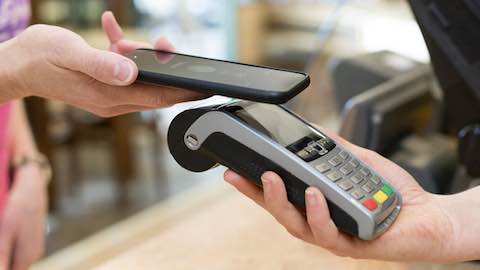- MENU
- HOME
- SEARCH
- WORLD
- MAIN
- AFRICA
- ASIA
- BALKANS
- EUROPE
- LATIN AMERICA
- MIDDLE EAST
- United Kingdom
- United States
- Argentina
- Australia
- Austria
- Benelux
- Brazil
- Canada
- China
- France
- Germany
- Greece
- Hungary
- India
- Indonesia
- Ireland
- Israel
- Italy
- Japan
- Korea
- Mexico
- New Zealand
- Pakistan
- Philippines
- Poland
- Russia
- South Africa
- Spain
- Taiwan
- Turkey
- USA
- BUSINESS
- WEALTH
- STOCKS
- TECH
- HEALTH
- LIFESTYLE
- ENTERTAINMENT
- SPORTS
- RSS
- iHaveNet.com: Technology

Getting Started with Mobile Payment Apps
by Jeremy Cleland
When it comes to the future of making payments, take it from the Federal Reserve: We’re going to increasingly use our smartphones to pay for purchases at the grocery store, mall or even the farmer’s market.
In fact, 39% of all mobile payment users with smartphones had made a point-of-sale payment, in the last year, using their mobile phone, according to the agency’s report, “Consumers and Mobile Financial Services 2015.”
I am one of those smartphone users who has migrated to using my phone versus my debit card or cash when the option is available. I like it because there are no credit card fees if my bank card is linked to my digital “wallet”, there is no card to lose, and I can keep track of my spending in the moment.
No matter which payment app you want to use, there are three steps you’ll need to take to get up-and-running:
1. Select your payment app
2. Review the privacy policy
3. Enter your payment methods
And here are the most popular apps and how to get started using them:
Apple Pay (iOS)
Security promise from its website:
“Because your card details are never shared when you use Apple Pay — in fact, they aren’t stored on your device at all — using Apple Pay on your iPhone, Apple Watch, or iPad is the safer and more private way to pay.
Apple Pay assigns a unique number for each purchase, so your payments stay private and secure.”
Payment set-up
To get started, watch the demo video and you can add the credit or debit card from your iTunes account to Wallet simply by entering the card security code. Apple Pay also has deployed Touch ID, which means you can use your iPhone 6 (or Apple Watch) to pay for your purchases at a store or restaurant with one touch of your thumb or finger.
Android Pay (Android)
Security promise from its website:
“When you shop at a merchant, Android Pay doesn’t send your actual credit or debit card number with your payment. Instead we use a virtual account number to represent your account information — so your card details stay safe.”
Payment set-up:
Watch the demo video to see how it works. When you’re at the counter, you unlock your phone and “tap” it against the card slider with the Android symbol to use Android Pay to complete your purchase.
PayPal (iOS and Android)
Security promise from its website:
“We protect you from checkout to delivery and use the latest anti-fraud technology to help spot problems before they happen. We never reveal your financial info to sellers.”
Payment set-up:
Check out this demo video, and then once the PayPal app is installed on your phone, you can check ahead using the store locator (included in the app too) to make sure your favorite pizzeria or boutique accepts PayPal at the counter. Some restaurants even let you order and pay from table when you sit down to speed up service. You log into the app, “check in” to the retailer, and pay the same way you would shopping online.
Jeremy Cleland has been a spokesperson for several Silicon Valley startups, like Tesla Motors, and spearheaded global stories about technology featured in media like Vice, Time magazine, Forbes and Wired.com. He’s also the dad to a 5-year-old who is already more tech-savvy than him.
Article: Copyright © iHaveNet